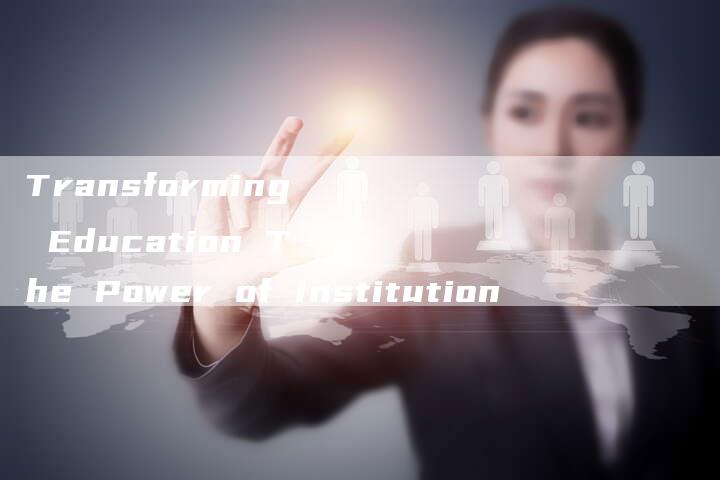
Transforming Education: The Power of Institution
Education is the key to a prosperous future for any society. With the ever-evolving world we live in, it is crucial to transform our education systems to meet the needs and challenges of the 21st century. The power of institutions in this transformation cannot be underestimated. Let's explore the ways in which institutions can shape and revolutionize education.
How do institutions influence education?
Institutions play a pivotal role in shaping education at various levels. They provide the structure and resources necessary for effective teaching and learning. From schools and universities to educational organizations and government bodies, these institutions lay the foundation for the development and implementation of educational policies and programs.
Moreover, institutions have the power to influence the curriculum, teaching methods, and assessment practices. They can create an environment that fosters innovation, critical thinking, and problem-solving skills among students. By establishing clear goals and standards, institutions can set a benchmark for quality education.
What challenges do institutions face in transforming education?
Transforming education is not without its challenges. Institutions often encounter resistance to change from various stakeholders, including educators, parents, and policymakers. There may be a fear of disrupting traditional teaching methods or a lack of understanding about the benefits of innovation in education.
Additionally, financial constraints can pose a significant challenge for institutions. Transforming education requires investments in technology, infrastructure, and professional development for educators. Limited resources may hinder the implementation of new and innovative approaches to teaching and learning.
How can institutions overcome these challenges?
To overcome the challenges, institutions need to prioritize communication and collaboration. Engaging all stakeholders in dialogue about the importance of transforming education can help address concerns and build consensus. Sharing success stories and research findings can also help create a shared vision for the future of education.
Institutions should also seek partnerships with external organizations and tap into available resources. Collaborating with businesses, NGOs, and community organizations can provide additional funding, expertise, and support for educational initiatives. By leveraging these partnerships, institutions can overcome financial limitations and enhance the transformation process.
What are the benefits of transforming education?
Transforming education has numerous benefits for individuals and society as a whole. It equips students with the skills and knowledge necessary for success in the modern world. By promoting critical thinking, creativity, and problem-solving, transformed education prepares individuals to adapt to an ever-changing job market and contribute to social progress.
Furthermore, transformed education can bridge the gap between different socio-economic backgrounds and promote equality. By providing equal access to quality education, institutions can empower individuals and foster social mobility.
Conclusion
Transforming education is a daunting but necessary task. Institutions have the power to shape education and drive innovation. By overcoming challenges and embracing change, institutions can create a future where education equips individuals with the skills they need to thrive in an ever-evolving world.






















